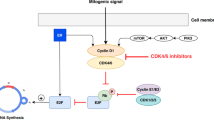Summary
1,10-Orthophenanthroline (OP) is a divalent cation chelating agent with known cytotoxicity to human normal and malignant T-lymphocytes. To determine whether OP might be a useful anticancer agent with specific T cell toxicity, OP's effect on cell growth was determined on colony-forming cells. The assay used supported growth of both malignant lymphoid and normal myeloid colony-forming cells (CFU-C) and thus a direct comparison of OP's antilymphoid and antimyeloid toxicity was obtained. The malignant lymphoid cells tested were established from patients at relapse and were resistant to conventional chemotherapeutic agents in vitro.
While OP was found to be toxic to all cells tested, some selective kill of malignant cells over CFU-C occurred. OP's cytotoxicity was time-dependent and a three-log enhanced kill occurred when the drug exposure time was increased from 1 to 24 h. When test cells were continously exposed to OP, the ID50 was less than 1 μg/ml for malignant lymphoid cells and the sensitivity index (SI=x ID50 CFU-C ÷ x ID50 cell line) ranged from 1.5 to 3.0. The National Cancer Institute currently screens new compounds for antitumor activity by determining whether the test drug is toxic to a mouse lymphocytic leukemia cell line (P388). While the mouse P388 cells were sensitive to OP in vitro, no effect was seen when OP was administered in vivo, even when schedules designed to take advantage of OP's time-dependent toxicity were used. Since malignant cells were sensitive to OP (ID50<1 μg/ml), and some selectivity over CFU-C occurred (SI>1), OP may be a useful agent for control of leukemic cell growth in vitro. However, since OP did not control the growth of P388 cells in vivo, additional studies designed to enhance the therapeutic index of OP in vivo are needed.
Similar content being viewed by others
References
Allen JI, Kay NE, McClain CJ (1981) Severe zinc deficiency in humans. Association with a reversible T-lymphocyte dysfunction. Ann Intern Med 95:1540
Berger NA, Johnson ES, Skinner AM (1975) Ortho-phenanthroline inhibition of DNA synthesis in mammalian cells. Exp Cell Res 96:145
Falchuk KH, Krishan A (1977) 1,10-Phenanthroline inhibition of lymphoblast cell cycle. Cancer Res 37:2050
Geran RI, Greenberg NH, MacDonald MM, Schumacher AM, Abbott BJ (1972) Protocols for screening chemical agents and natural products against animal tumors and other biological systems, 3rd edn. Cancer Chem Rep [3] 3:1
Good RA, Fernandes G, West A (1979) Nutrition, immunity and cancer — A review. 1: Influence of protein or protein-calorie malnutrition and zinc deficiency on immunity. Clin Bull 9:3
Krishnamurti C, Saryan LA, Petering DH (1980) Effects of ethylenediaminetetraacetic acid and 1,10-phenanthroline on cell proliferation and DNA synthesis of Ehrlich ascites cells. Cancer Res 40:4092
Leucke RW, Simonel CE, Fraker PJ (1978) The effect of restricted dietary intake on the antibody mediated response of the zinc-deficient A/J mouse. J Nutr. 108:881
Oleske, JM, Westphal ML, Shore S, Gordon D, Bogden JD, Nahmias A (1979) Zinc therapy of depressed cellular immunity in acrodermatitis enteropathica: Its correction. Am J Dis Child 133:915
Park CH, Amare M, Savin MA, Goodwin JW, Newcomb MM, Hoogstraten B (1979) Prediction of chemotherapy response in human leukemia using an in vitro chemotherapy sensitivity test on the leukemic colony-forming cells. Blood 55:595
Park CH, Wiernik PH, Morrison FS, Amare M, Van Sloten K, Maloney RT (1983) Clinical correlations of leukemic clonogenic cell chemosensitivity assessed by in vitro continuous exposure to drugs. Cancer Res 43:2346
Pekarek RS, Sandstead HH, Jacob RA, Barcome DF (1979) Abnormal cellular immune responses during acquired zinc deficiency. Am J Clin Nutr 32:1466
Pike BL, Robinson WA (1970) Human bone marrow colony growth in agar-gel. J Cell Physiol 76:77
Rubin H (1972) Inhibition of DNA synthesis in animal cells by ethylene diamine tetraacetate (EDTA) and its reversal by zinc. PNAS 69:712
Salmon SE (ed) (1980) Applications of human tumor stem cell assay to new drug evaluation and screening. In. Cloning of human tumor stem cells (Progress in clinical and biological research, vol 48). Liss, New York, pp 291–314.
Salmon SE, Hamburger AW, Soehnlen B, Durie BGM, Alberts DS, Moon TE (1978) Quantitation of differential sensitivity of human tumor stem cells to anticancer drugs. N Engl J Med 298:1321
Smith SD, Wood GW, Fried P, Lowman JT (1981) In vitro growth of lymphoma colonies from children with non-Hodgkin's lymphoma. Cancer 48:2612
Smith SD, Trueworthy RC, Kisker SE, Noller LG, Lowman JT (1983) In vitro sensitivity of normal granulocytic and lymphoma colonies to vinca alkaloids. Cancer 51:417
Smith SD, Shatsky M, Cohen PS, Warne R, Link MP, Glader BE (1984) Monoclonal antibody and enzymatic profiles of human malignant T-lymphoid cells and dervied cell lines. Cancer Res 44:5657
Venditti JM (1983) The National Cancer Institute Antitumor Drug Discovery Program. Current and future perspectives: A commentary. Cancer Treat Rep 67:767
Weisenthal M (1981) In vitro assays in preclinical antineoplastic drug screening. Semin Oncol 8:362
Williams RO, Loeb LA (1973) Zinc requirement for DNA replication in stimulated human lymphocytes. J Cell Biol 58:594
Zanzonico P, Fernandes G, Good RA (1981) The differential sensitivity of T cell and B cell mitogenesis to in vitro zinc deficiency. Cell Immunol 60:203
Author information
Authors and Affiliations
Additional information
Pamela S. Cohen is a recipient of a clinical fellowship from the American Cancer Society. Stephen D. Smith is a Scholar of the Leukemia Society of America. This work was supported in part by grant CH182B from the American Cancer Society
Rights and permissions
About this article
Cite this article
Cohen, P.S., Smith, S.D. In vitro and in vivo chemotherapy screening of the divalent cation chelator 1,10-orthophenanthroline. Cancer Chemother. Pharmacol. 15, 6–10 (1985). https://doi.org/10.1007/BF00257285
Received:
Accepted:
Issue Date:
DOI: https://doi.org/10.1007/BF00257285




